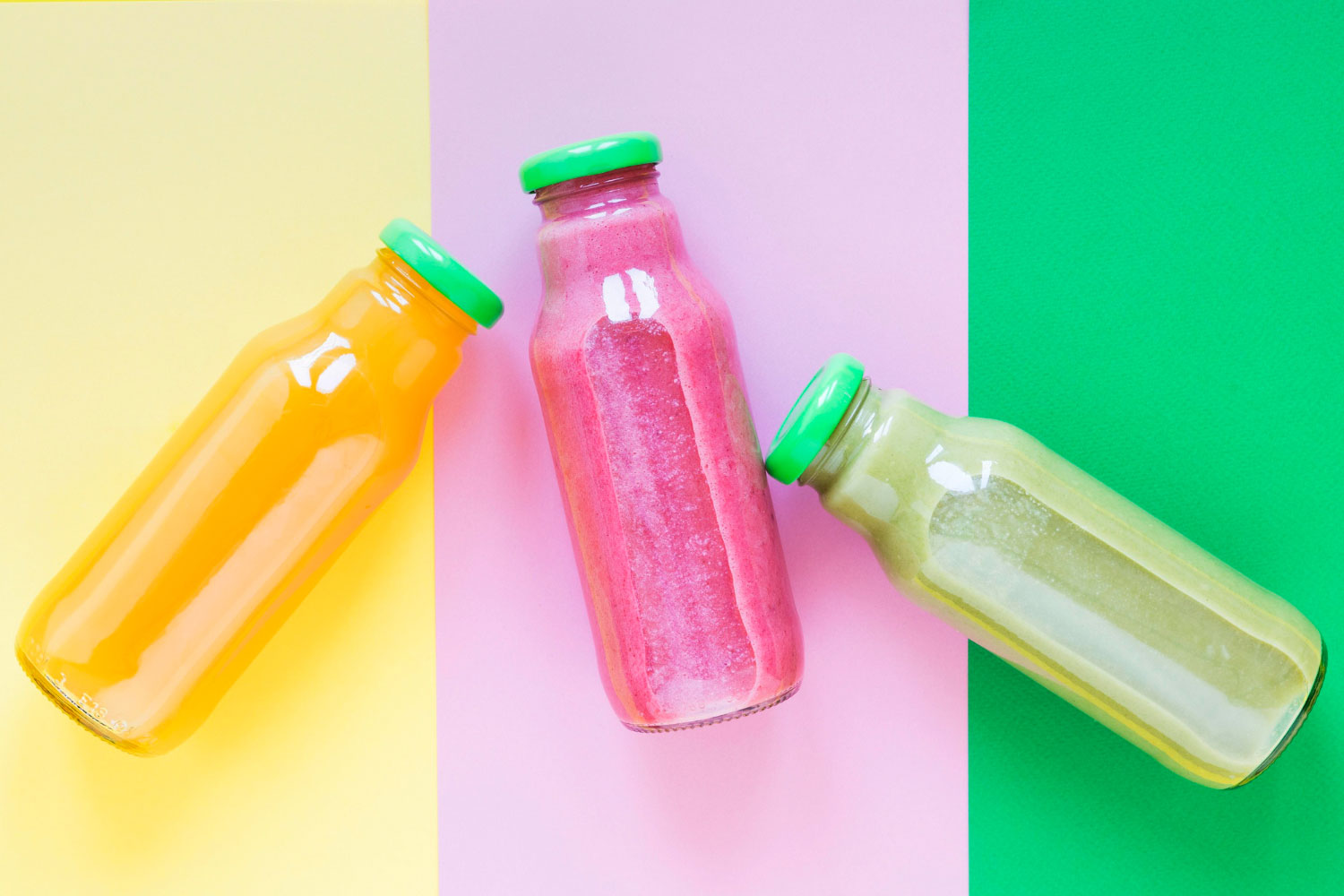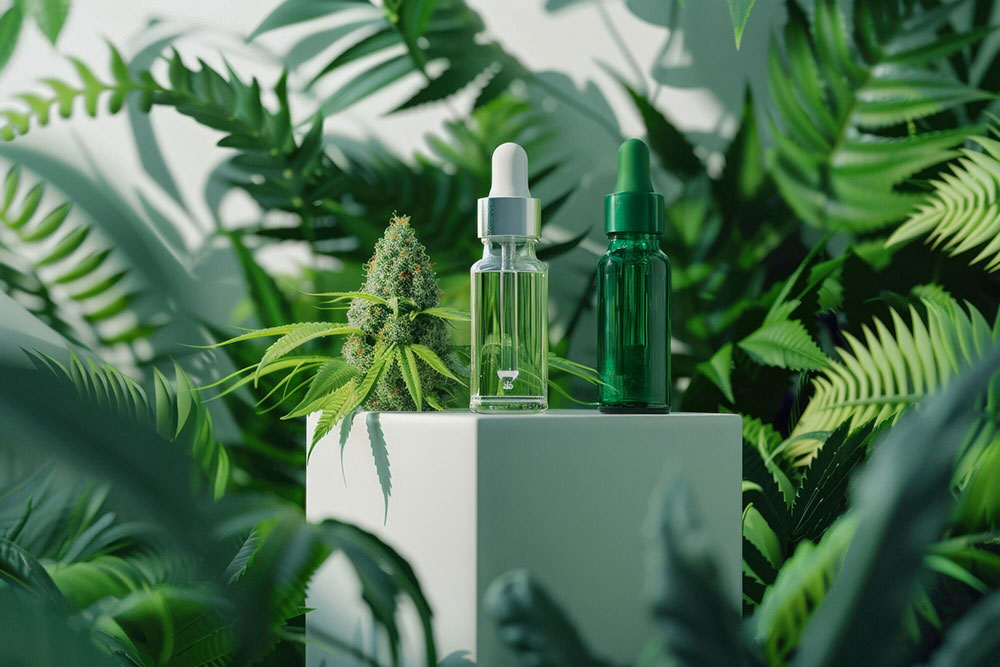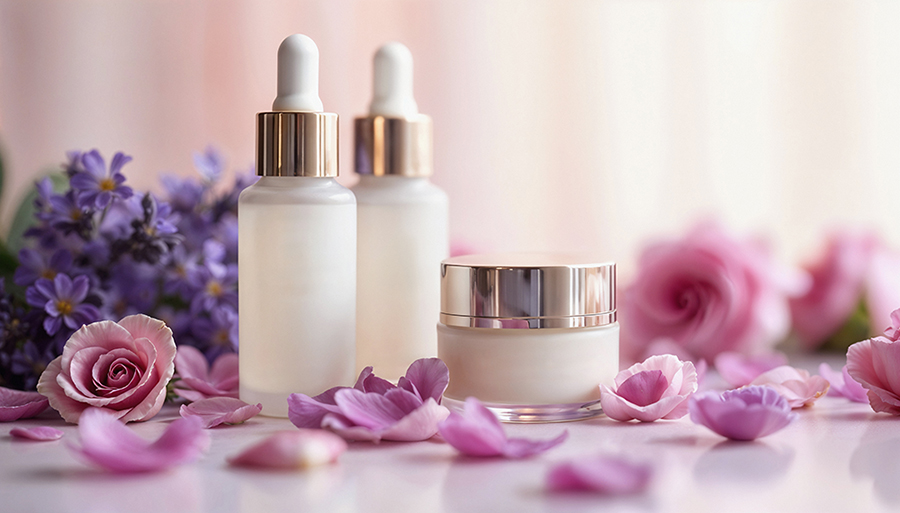Frosted vs. Clear Glass and Bottles – Which One Suits Your Brand Best?
So, you’ve decided to package your product in glass and bottles—great choice! But now comes the tricky part: Should you go with frosted glass or clear glass? Both have their perks, and each one gives off a completely different vibe. Whether you’re selling skincare, beverages, or luxury fragrances, the right bottle finish can make all the difference. Let’s break it down!
Click here to learn more about the article Glass.
Frosted Glass and Bottles: Elegant, Mysterious, and Oh-So-Trendy
Frosted glass bottles have that soft, dreamy look that instantly screams sophistication. If your brand is all about minimalism, high-end aesthetics, or a touch of mystery, frosted glass is your best friend. It gives products a premium feel, which is why you’ll often see it used for serums, perfumes, and luxury skincare.
But it’s not just about looks! Frosted glass helps filter out UV rays, which means your product stays fresher for longer. If you’re packaging anything that’s light-sensitive, like essential oils or serums, this could be a game-changer. Plus, the matte surface feels amazing in your hands—almost like a soft-touch experience that makes opening a bottle just a little more special.
Another fun bonus? Frosted glass bottles hide fingerprints way better than clear glass. No more smudgy, greasy marks ruining that perfect first impression! If your product is meant to sit on a fancy bathroom shelf or makeup counter, frosted glass keeps it looking flawless all day long.
Clear Glass: Classic, Transparent, and Always in Style
If you want customers to see every detail of what’s inside, clear glass bottles are the way to go. They offer full visibility, which is especially great for products with beautiful colors, natural ingredients, or unique textures. Think vibrant juices, golden hair oils, or hand-crafted bath salts—clear glass lets them shine.
Clear glass is also timeless and versatile. Whether you’re in the food, beauty, or beverage industry, it works across the board. It’s clean, fresh, and gives off that pure, honest, no-secrets-here kind of vibe. If your branding focuses on transparency, natural ingredients, or artisanal craftsmanship, clear glass reinforces that message perfectly.
But keep in mind—because it’s completely see-through, clear glass doesn’t protect against UV exposure like frosted glass does. That means some products, like oils and organic skincare, might degrade faster if left in direct sunlight. However, if your bottles will be stored in boxes or darker environments, this might not be a big concern.
So… Which One Wins?
Honestly, there’s no wrong answer! The choice between frosted and clear glass bottles comes down to your brand’s personality and product needs. If you’re all about luxury, protection, and soft aesthetics, frosted glass is the way to go. If you prefer a classic, transparent, and ingredient-forward approach, clear glass bottles might be your perfect match.
Still unsure? A mix of both might be the sweet spot! Some brands use clear glass for everyday items and frosted glass for their premium or limited-edition products. That way, you get the best of both worlds while giving customers a clear distinction between your product lines.
At the end of the day, whether you go frosted or clear, glass bottles always add a touch of class. So go ahead—pick the one that suits your brand best and let your packaging do the talking!
Glass and Bottle Shape and Functionality – How to Pick the Best Design for Your Product

Choosing the right glass bottle shape isn’t just about looks—it’s about functionality, branding, and customer experience. A well-designed bottle can make your product easier to use, more appealing on shelves, and even safer to handle. But with so many options out there, how do you know which one is best? Let’s break it down!
The Role of Glass and Bottle Shape in Branding
Think about some of the most iconic glass bottles in the world—Coca-Cola’s curvy silhouette, Chanel’s sleek perfume bottle, or the classic apothecary jar. These bottles aren’t just containers; they’re part of the brand’s identity.
Your bottle’s shape can tell customers a lot about your product before they even pick it up. A tall, slim bottle feels elegant and sophisticated, perfect for luxury skincare or premium beverages. A short, wide bottle feels sturdy and practical, ideal for creams, sauces, or specialty oils. If you’re going for a modern and minimalist vibe, a square or geometric bottle can give your brand a sleek, contemporary feel.
But don’t just think about aesthetics—consider how your glass bottle will be stored, shipped, and displayed. Will it stand out on crowded shelves? Will it fit easily in handbags or kitchen cabinets? A beautiful bottle is great, but a practical, user-friendly bottle is even better.
Functionality: Making Your Bottle Easy to Use
A great glass bottle isn’t just nice to look at—it should also be easy to hold, open, and pour from. Different products have different needs, and the shape of the bottle plays a huge role in usability.
If you’re selling liquids like oils, toners, or syrups, a narrow-neck bottle can help control the flow and prevent spills. On the other hand, if you’re packaging thicker products like lotions, creams, or honey, a wide-mouth bottle makes scooping and dispensing much easier.
For products that need precise application—like serums, essential oils, or perfumes—a dropper bottle or pump-style design can enhance the user experience. If your product is meant to be sprayed, misted, or poured in small amounts, make sure the bottle is compatible with the right closures.
And let’s not forget grip! Some glass bottles can be slippery, especially in wet environments like bathrooms or kitchens. A curved or textured design can help prevent accidents, making it easier for customers to handle the bottle confidently.
Choosing the Right Glass and Bottle for Your Product Type
Different types of products have different packaging requirements. Here’s a quick guide to help you match your glass bottle shape to your product:
- Beverages & Juices: Tall, slim bottles work well for premium drinks, while wider bottles suit bulk packaging or artisanal beverages.
- Skincare & Beauty: Cylindrical or square bottles offer a sleek, high-end feel, while dropper bottles are perfect for serums and oils.
- Sauces & Condiments: A bottle with a wide mouth makes scooping and pouring easier, while a tapered neck helps with controlled dispensing.
- Fragrances & Perfumes: Unique, elegant shapes stand out on vanity tables, often with decorative caps or intricate designs.
- Oils & Vinegars: A narrow-neck bottle controls the pour, while a handle can add convenience for kitchen use.
If your product is thick, delicate, or expensive, choosing the right bottle shape ensures customers can use it efficiently without frustration or waste. Give our unique Light Green Oil Bottle a go, we think you’ll love them.
Caps and Closures That Work Best – Finding the Right Lid for Your Glass and Bottle

So, you’ve chosen the perfect glass bottle for your product—great start! But hold on, you’re not done yet. The cap or closure you pick can make or break the entire packaging experience. The right lid isn’t just about sealing in freshness; it affects usability, branding, and even sustainability. Whether you’re bottling skincare, beverages, or gourmet sauces, let’s explore the best closure options to match your product.
Why the Right Closure Matters More Than You Think
A beautiful glass bottle is only as good as its cap. Imagine buying a premium face serum, only to find the dropper leaks. Or pouring a handcrafted olive oil, only to get way too much in one go. A poorly chosen closure can lead to waste, frustration, and even product damage.
Your bottle’s closure plays a crucial role in preserving freshness, preventing leaks, and making the product easy to use. It also impacts the customer’s first impression. A smooth, high-quality cap can make your packaging feel luxurious and professional, while a flimsy or hard-to-open lid can send the wrong message.
From dropper caps to tamper-evident seals, let’s find the perfect closure for your glass bottle.
Screw Caps, Droppers, and Pumps: Choosing Based on Function
Different products need different types of closures. Here’s a breakdown of the most popular options and what they’re best for:
- Screw Caps: The all-rounder of the closure world! These work great for sauces, juices, oils, and even beauty products. They provide an airtight seal, keeping your product fresh and spill-free. Plus, they come in different materials like metal or plastic, giving you flexibility in design.
- Dropper Caps: If you’re selling serums, essential oils, or liquid supplements, a dropper cap is your best bet. It allows for precise dispensing, preventing product waste while keeping things mess-free. Customers love the controlled application, making it a favorite for high-end skincare and wellness brands.
- Pump Dispensers: Ideal for lotions, creams, and liquid soaps, pump dispensers make dispensing effortless. They provide controlled portions, keeping users from overusing product. Plus, they add a professional touch to glass bottles, making them look polished and high-end.
- Cork Stoppers: Want a rustic, eco-friendly feel? Cork stoppers are perfect for artisanal oils, craft beverages, and luxury perfumes. They add a natural, handcrafted aesthetic but aren’t ideal for products that need an airtight seal.
- Spray & Mist Caps: If your product is a fragrance, toner, or refreshing facial mist, a spray closure ensures even application. Fine-mist sprayers provide a light, airy feel, while trigger sprays work well for larger bottles like cleaning solutions or body mists.
Each closure type affects the way customers interact with your product, so choosing the right one is key!
Tamper-Proof, Child-Resistant, or Reusable? Special Features to Consider
Beyond the basics, some products require extra functionality to enhance safety or sustainability. Here are some key closure features that could be a game-changer for your glass bottles:
- Tamper-Evident Caps: Essential for food, beverages, and pharmaceuticals, these provide peace of mind by ensuring your product hasn’t been opened before purchase. Common types include shrink bands, breakable seals, and pop-top caps.
- Child-Resistant Closures: If your product contains anything that shouldn’t end up in little hands, child-resistant caps are a must. These are often used for medications, cleaning solutions, and essential oils to prevent accidental spills or ingestion.
- Eco-Friendly & Reusable Lids: Many brands are embracing sustainability by offering recyclable or reusable closures. Think bamboo caps, metal screw tops, or refillable pumps that reduce plastic waste and add an eco-conscious appeal.
Choosing the right lid isn’t just about function—it’s also about aligning with your brand values. Whether that means focusing on safety, sustainability, or premium aesthetics, your closure should enhance the entire product experience.
Branding Considerations for Glass Packaging – What to Keep in Mind for Labeling

So, you’ve chosen the perfect glass and bottle for your product—sleek, stylish, and ready to grab attention. But wait! Without the right label and branding, even the most beautiful bottle can get lost on the shelf. Your label is your brand’s voice, the first thing customers notice, and the key to making your product memorable. Let’s dive into the essential things to keep in mind when designing labels for glass bottles.
Glass and Bottles: Balancing Aesthetics and Functionality
A great label isn’t just about looking good; it needs to be practical, durable, and aligned with your brand’s identity. Think about what feeling you want your bottle to evoke—luxury, simplicity, eco-friendliness, or bold energy? The design, colors, and fonts you choose all play a role in shaping that perception.
But branding isn’t just about style—it’s also about usability. Your label should be easy to read, resistant to moisture, and securely attached to your glass bottle. Ever picked up a product where the label was peeling off or smudged? Not a great look! High-quality label materials like waterproof vinyl, embossed paper, or clear film ensure your branding stays intact even in humid bathrooms, kitchens, or refrigerators.
Want to make your label pop? Minimalist designs with bold typography work great for premium skincare and beverages, while vintage-inspired labels add charm to artisanal foods and craft products. The key is finding a balance between aesthetics and practicality so your label doesn’t just look good but also lasts.
Choosing the Right Label Size and Placement for Glass and Bottles
When it comes to glass bottles, one size does not fit all. The shape and curvature of your bottle determine where and how your label should be placed. A tall, cylindrical bottle offers a large surface area for vertical labels, while a rounded or square bottle may need a custom-shaped design to avoid awkward wrinkles or gaps.
Placement is everything! If your product is meant to sit on shelves, make sure the key information—like product name, logo, and benefits—is clearly visible from the front. If it’s something people use daily, like a serum or cooking oil, a wrap-around label with branding on the front and instructions on the back can work well.
Thinking outside the box? Some brands opt for partial or minimalist labeling, letting the beauty of the glass bottle shine through. Clear labels can create a sleek, modern effect, while etching or screen printing on the glass adds a high-end, permanent touch.
What Information Should Your Label Include for Glass and Bottles?
Now that you’ve nailed the design, let’s talk about what actually goes on the label. Depending on your industry, there are legal requirements for what needs to be included. But beyond that, you want to make sure your label answers the key questions your customers have.
Here’s a checklist of must-have elements for your glass bottle label:
✅ Brand Name & Logo: Make sure your brand is instantly recognizable and stands out at a glance.
✅ Product Name: Keep it clear, catchy, and easy to read.
✅ Ingredients (if applicable): Transparency builds trust—especially in beauty, food, and wellness products.
✅ Usage Instructions: Simple, clear instructions make your product more user-friendly.
✅ Sustainability Information: If your bottle is recyclable or reusable, highlight it! Eco-conscious packaging is a huge selling point.
✅ Expiration Date or Batch Number: Especially for food, beverages, and skincare where freshness matters.
✅ Legal Disclosures: Depending on the product type, you may need to include safety warnings, certifications, or regulatory details.
Your label should be informative without being cluttered. If there’s too much text crammed into a small space, customers may skip over it. Instead, use simple icons, bold headings, and clean layouts to guide their eyes to the most important details.




